Playing in the dunes, Andrew and I found this horse skull. Immediately I was trying to decide how to get it home and add it to our collection of skulls and bones in our school room. Nymka changed my thoughts when she explained the importance of the spirit of the Mongolian horse and how horse skulls are revered by modern herders. Alas, I left it behind and brought it home in a photo instead.
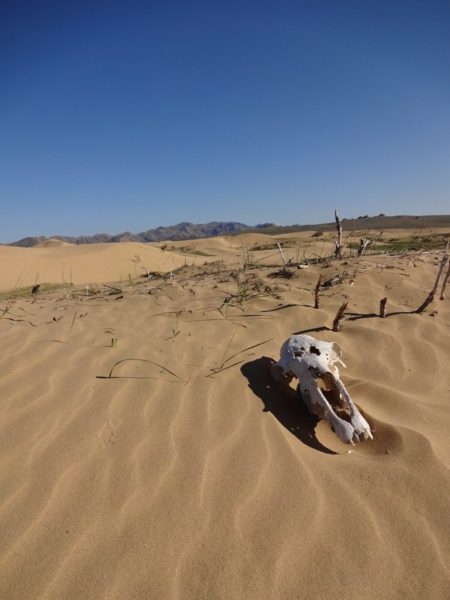
The Spirit of the Mongolian Horse
I won’t say much about ovoo’s yet because Andrew is working on a post specifically about this topic. However, for the purpose of a short momentary explanation, an ovoo is a Shaministic cairn that is closely tied to the worship of the sky and mountains – and respected horse skulls are included. In the lower, center of this ovoo is a skull – or the spirit of a horse.
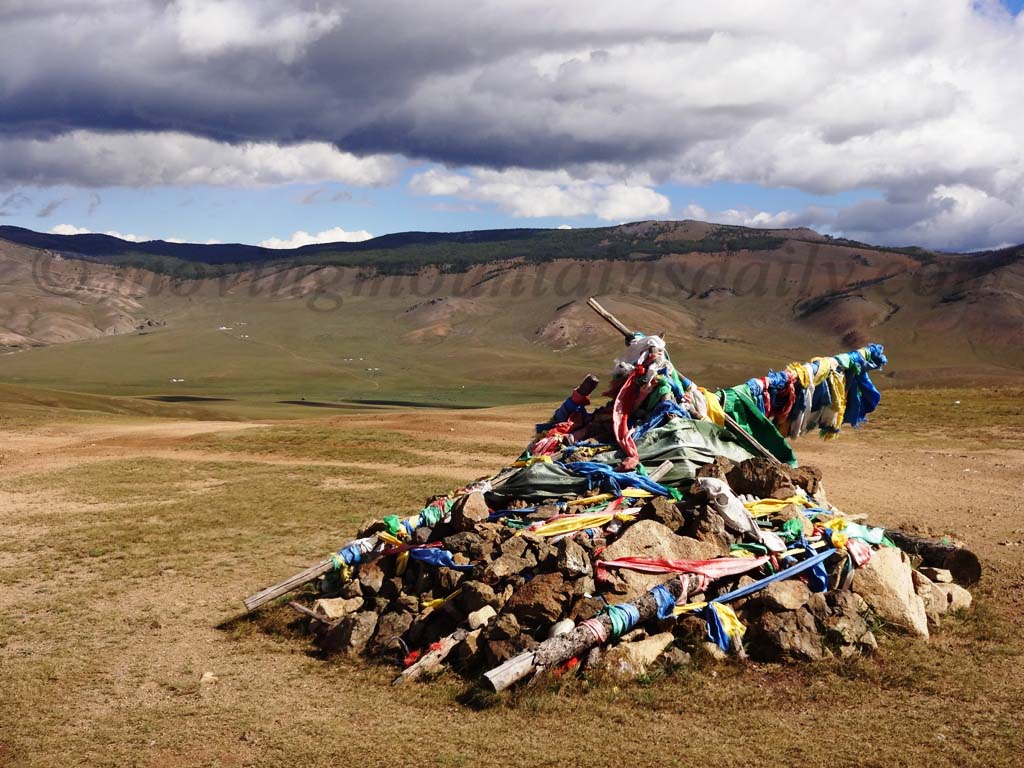
If Mongolian horse skulls are revered, the real animal is held in even higher regard. Besides blue sky, Mongolia is known as the land of horses because they occupy a major role in history and in everyday life. There are three million horses in Mongolia – more than their human counterparts! Male horses are used for transportation, racing, herding, and occasionally meat. The female horse is used for breeding and milking.
Airag, Fermented Mare’s Milk
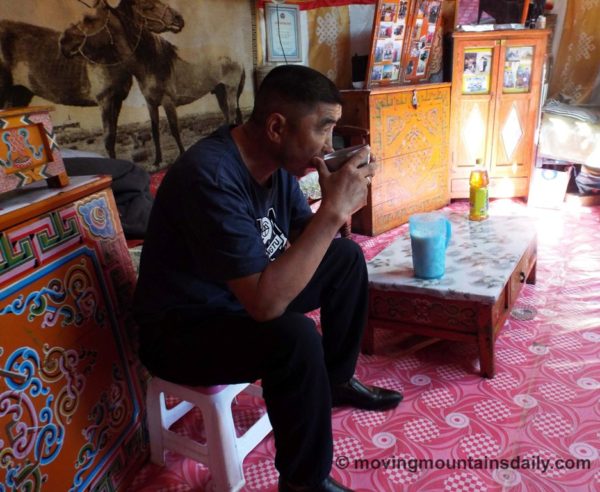
The milk of the mare also has special status. Airag, or fermented mare’s milk, is considered the national Mongolian beverage. All guests are treated to a hospitality cup of Airag upon entering a home. It has a soft sparkle and a soured, fermented taste. The drink, itself, has a 2% alcohol content. Andrew and I were served Airag in all the homes we visited. Personally, I didn’t mind it cold, but to me, the room temperature Airag seemed stronger. Andrew, being a kid, was exempt and he was just as happy with that decision! Drinking raw mare’s milk can have a laxative effect so it is almost always fermented.
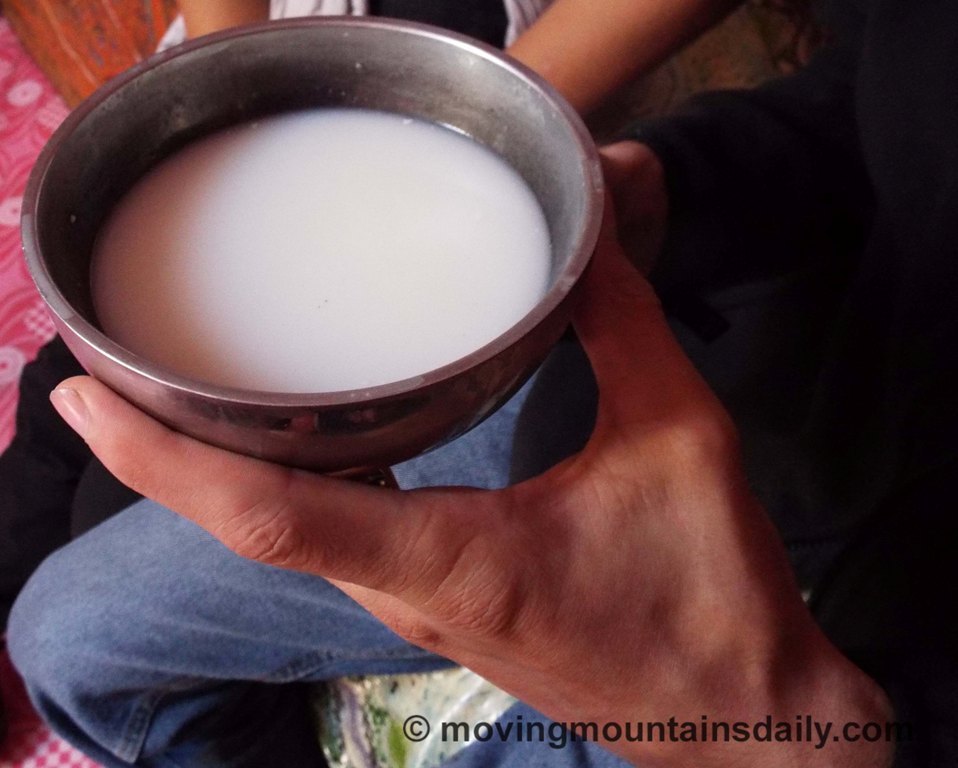
Making Airag
To ferment mare’s milk, the raw liquid is poured through a cloth and into a bucket – or sometimes a leather sack. The milk must be continuously stirred with a wooden masher over the course of several days, so that the yeast and lactic acid bacteria can ferment the milk evenly. The fermentation destroys the lactose in milk which makes it a great drink for lactose intolerant people!

Aaruul, Dried Yogurt Chips
Fermented mare’s milk can also be turned into Aaruul, or dried yogurt chips. Many times we saw these drying on top of the gers. The fermented chips have a particularly strong, sour taste, while the chips made from cow or yak’s milk, have a regular plain yogurt flavor.
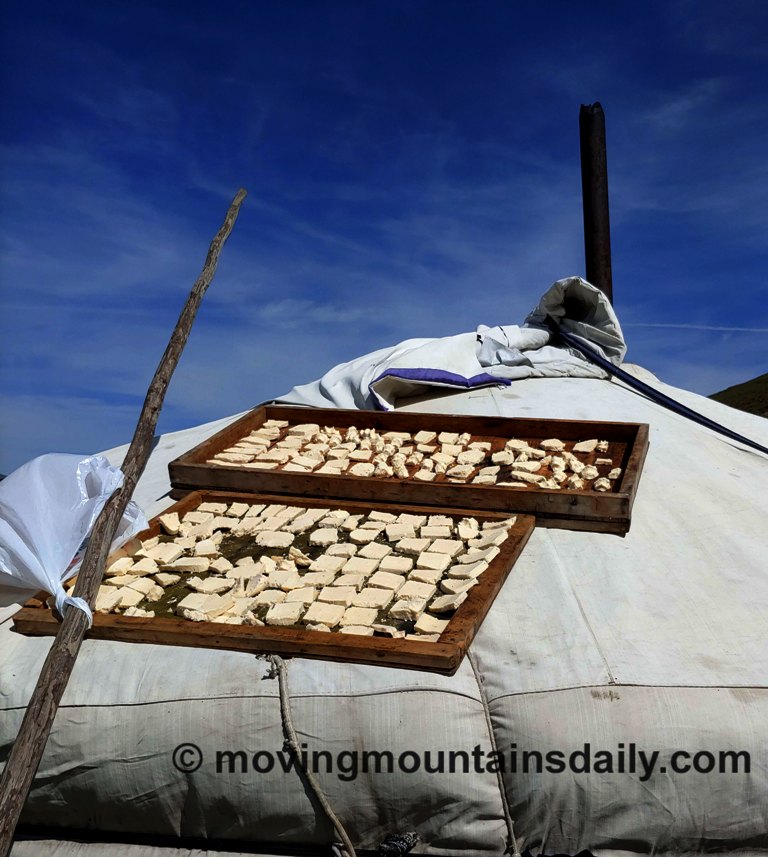
The Mongolian Horse in Everyday Life
The Mongolian horse accompanies the nomad in almost all aspects of daily life. A few younger Mongolians have resorted to herding with motorcycles but the problems begins when the motorcycles break down. Even the youth are reliant on faithful steeds!

The Mongolian horse is short and stocky – almost pony-like. They are docile and are never shod, except in the northern lake area where they wear spikes for hauling loads on the frozen lakes. The horse is strong and tough. It has to be to survive the long, cold winters in Mongolia.
Horseback Riding on the Steppe
One evening, we were getting ready to go for a sunset ride. Our host gave Nymka a sideways glance when we asked what the horses names were. Evidently they come to expect this particular question from foreigners! The nomads do not name their horses but instead call them by their color. And colorful, they are!
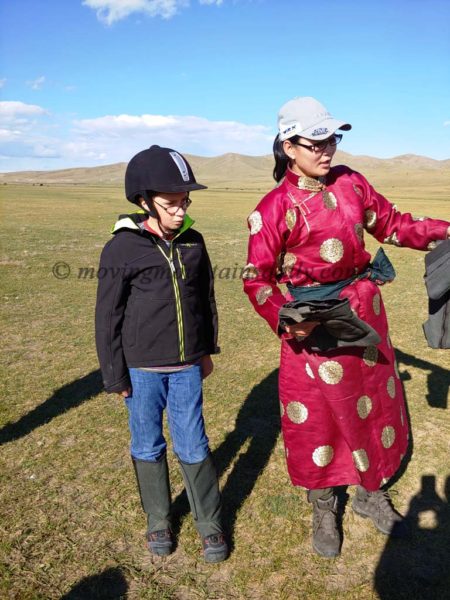
Andrew was mortified that the horses didn’t have names so by the time we were done riding our horses had personalized names – one of which was ‘Farter’. Our host was amused with Andrew and kept a close eye on him as we rode across the steppe. Not because of Andrew’s riding skills, but because Andrew’s horse kept passing gas, LOUDLY, and each time, Andrew would fly into a fit of laughter until we were afraid he was going to fall off the horse. Andrew was riding a spunky, little horse whom I think knew exactly what he was doing, because each time all the riders would start to quiet, the horse would pass gas again – right at the perfect time.
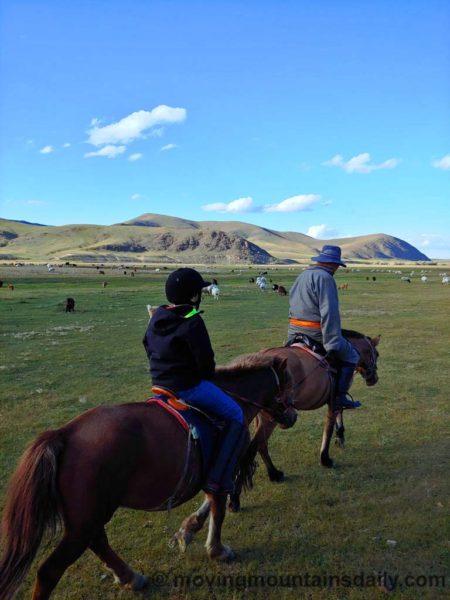
Hands-off Care
Mongolian horses are not an expensive keep like their western counterparts. The Mongolian horse roams freely but is occasionally tied to a wooden post or lead line. They are not bathed, sheltered, or fed grains. Horses in Mongolia are not luxury items instead they are an inexpensive keep and the care is very hands-off. Because the horses live like their wild counterparts, they rarely have foot problems or require farriers.
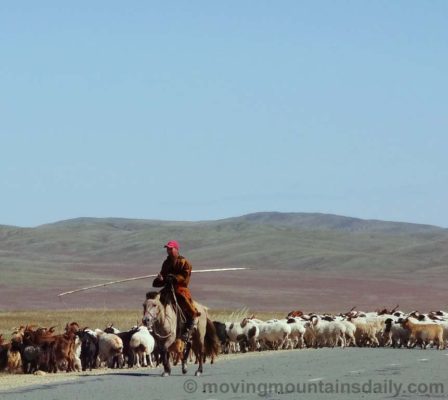
War Horses of History
The fact that the Mongolian horse requires little water, and doesn’t need to be fed daily rations, as well as their long distance endurance made them the perfect war horse in the crusading history of Genghis Khan. It is said that the warriors who rode with Genghis Khan would bring a small herd of horses with them so that they could change steeds in the middle of battle. This type of horse gave the Mongol army an advantage over their European counterparts.
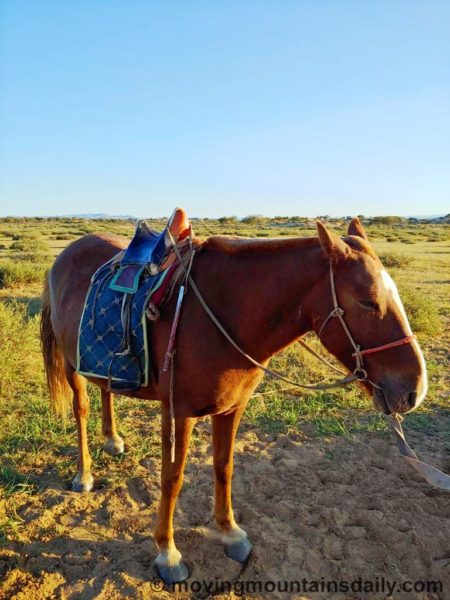
Supposedly, Genghis Khan claimed that it was easy to conquer the world from the back of the horse. His armies were known as “Hell’s Horseman” and they were feared by all. The Mongol armies conquered their way to Europe.
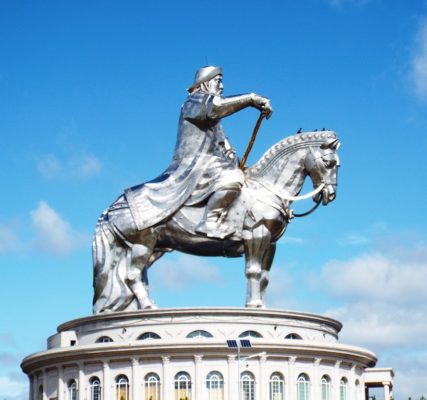
Genghis Khan is as revered as the horses that he and his armies trained. The Modern Mongolians have dedicated this statue at the Genghis Khan Statue Complex which is located between Ulaanbaatar and Elsen Tasarhai. Visitors can ascend to the head of the horse where they get a beautiful view of the surrounding countryside.
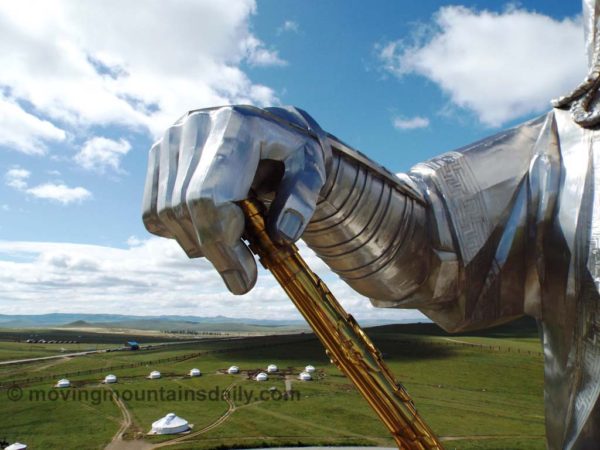
The horse has a long history in this area of the world. In fact, equine dentistry started in Mongolia!


